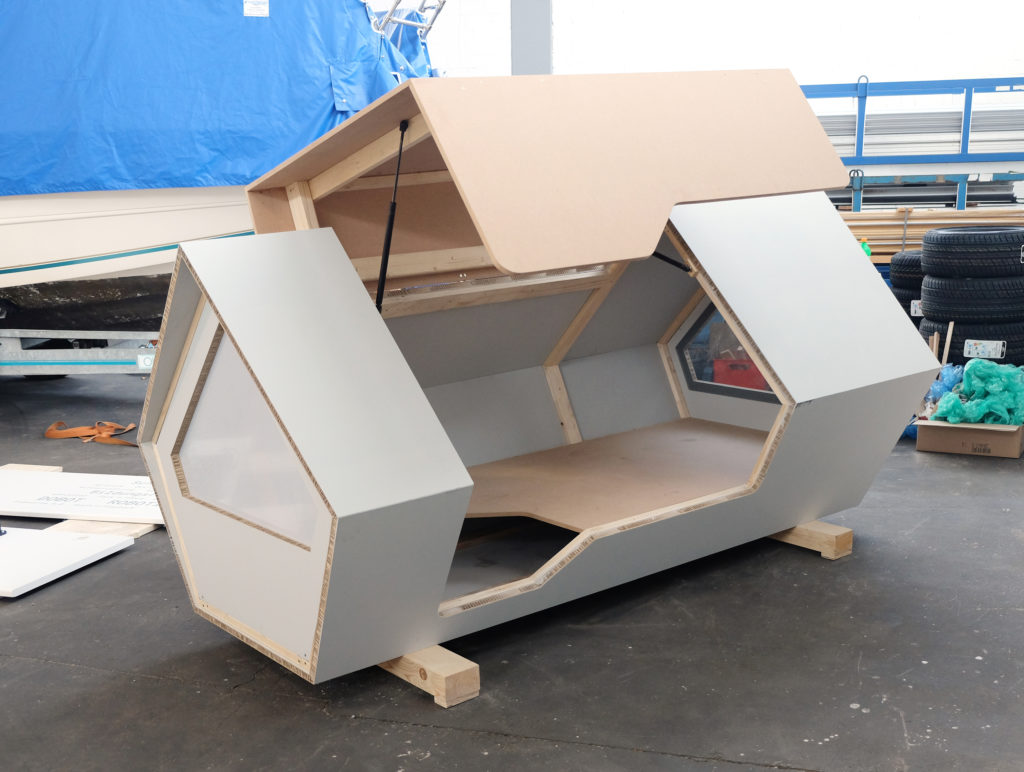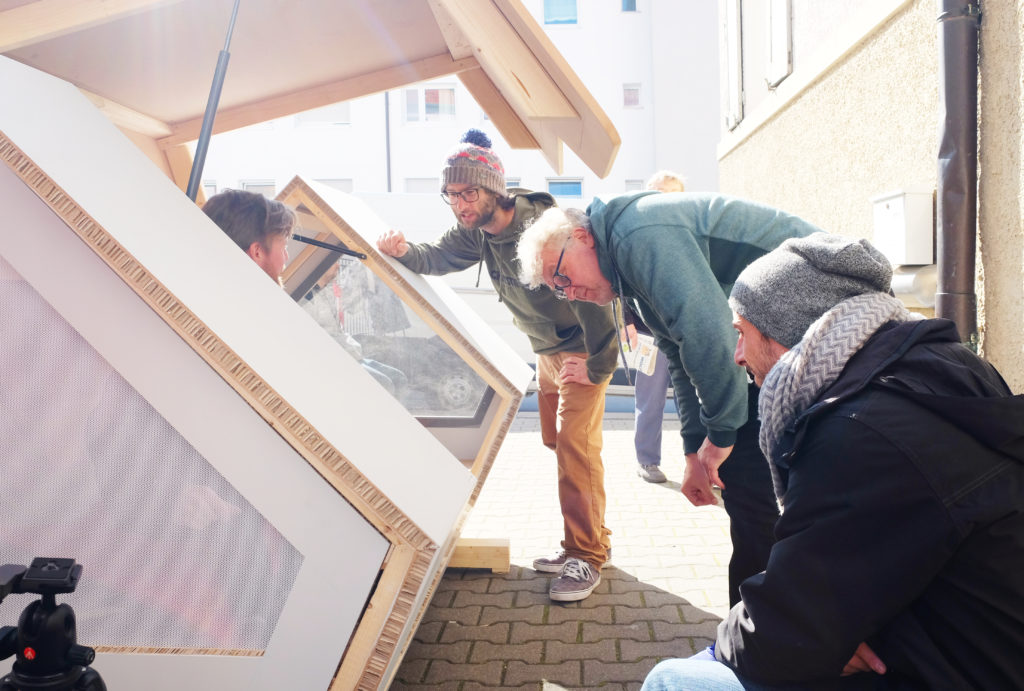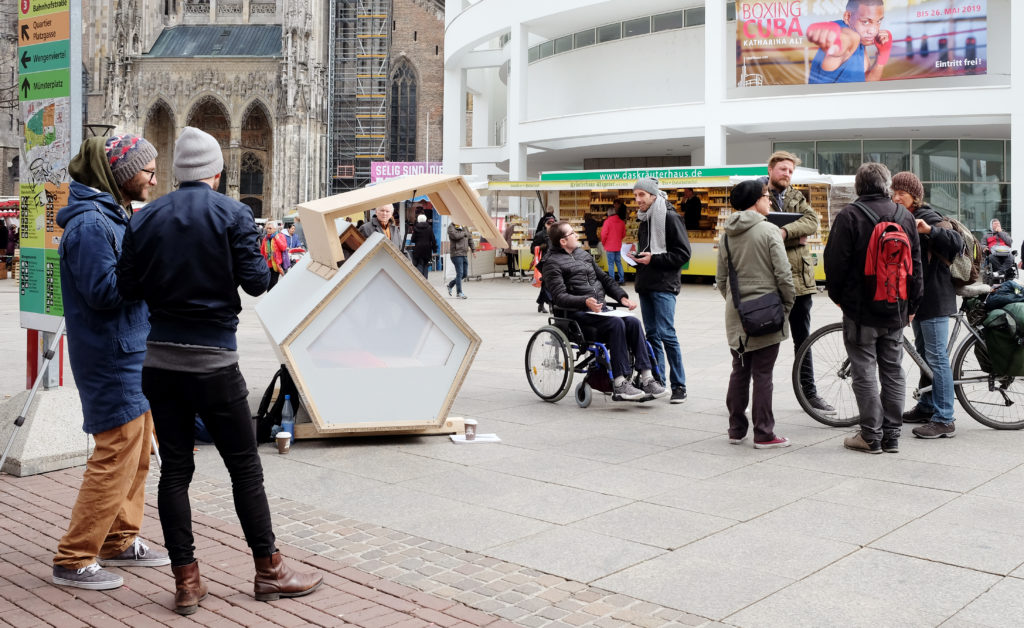Homelessness affects people all around the world. In the United States, about 567,715 people were left without a home “on any given night” in 2019. To make matters worse, 37% of these people sleep outside with no shelter. [1] While homelessness is a growing issue with no clear solution, there are ways to immediately help individuals residing in poorly habitable locations. In Germany, there were about 860,000 people reported as homeless. The debate on this topic peaked in 2018 when nine people died from the cold. So a team from Ulm devised insulated pods for homeless people to sleep in on cold winter nights.
Innovative Team Creates Pods for Homeless People
The city of Ulm in South Germany founded a creative program, a sort of do-good think tank, to improve social issues. Six entrepreneurs and technical experts took the challenge. They began brainstorming ideas and taking suggestions from locals on what to improve. Many people asked how the team could help the homeless who are freezing sleeping outside.
One of the members of the creative team, Florian, explained how the team formed. “We initially created sort of a ‘think tank’/’creative lab’ project as a team here in Ulm with the (maybe a little bit bold) idea that everyone can drop off their respective problem, whatever it may be, for us to solve it.

“Before that, we chose some experts whose task was to decide which of the submitted problems we actually would have to work on, for 48 hours each. And then, the city of Ulm basically submitted their ‘problem,’ which was something along the lines of, ‘We’ve got homeless people who can’t go to shelters, and we don’t want them to freeze to death. Can you do something about this?’ And our experts selected this as a task for us to work on.” [3]
The team was on the case, and they worked fast. They created several versions of sleeping capsules for people who prefer to avoid shelters. These ‘Ulmer Nests’ will offer some protection while they sleep, as well as warmth when it’s dangerously cold outside.
“This was on a Thursday morning, at 8 am,” said Florian. “By Friday evening, the basic concept of the Nests was born, a prototype showing off shape, functionality, and processes was there, even including a VR prototype to be able to experience what it feels like to be in one of the capsules — and we never changed anything substantial all of that later.”
The Design of the Ulmer Nests
These prototype pods for homeless people look brilliant, but they are still being tested and developed. One significant trial occurred last winter: determining how the pods hold up in the German winter. There are still improvements being made to the design to perfect it.
The team created these nests as an emergency for those with no place to go; it’s not an alternative to a regular home. It’s especially ideal for those who avoid shelters due to psychological reasons or because most shelters don’t allow pets. [4]

“For this winter, we modified details of our door in an effort to improve usability both for the people sleeping in the Nests and the social workers checking in on them,” said Florian about the design of the pods. “Also, we spent a good deal of time improving insulation and climate management to be able to keep humidity and temperature at the best possible levels while operating on a limited budget of energy. Related to this, we also improved the connected-ness of the Nests by integrating them into the Ulm city’s own wireless IoT network.”
Each pod is constructed by hand. The team is working to make them less expensive than their current cost. But they have solar panels, good insulation, and enough space for two people, belongings, plus a pet. Sensors monitor the temperature, humidity, as well as check for smoke and carbon dioxide. There’s lighting, a ventilation system, and a lock to secure the pod from the inside. There’s also a motion sensor on the outside so that social workers will know when the door is opened and when the pod should be cleaned to maintain hygienic standards. [5]

Hope for a Better Future
Even when the pods are ready for mass production, there are more details to work out, such as how and where they will be used. “We are still operating on a small-scale prototype level and are looking into finding possible prospective user (cities) and ways of manufacturing bigger numbers of the Nests if there’s sufficient demand for it,” he said.
So far, the city of Ulm is extremely supportive of the solution the team has concocted. “We’ve even seen some effects that we didn’t dream of, like neighbors providing the overnight guests with hot tea in the morning and such,” said Florian. “...And then there’s a lot of those small moments when working on the Nests out in the city, and people come up to say thank you (homeless and not homeless alike). That also means a lot, actually.”
For now, there are only a small number of nests available, and they are only erected during the winter. Although it’s a small project in the face of a massive global issue, these news pods for homeless people create hope for an improved future.